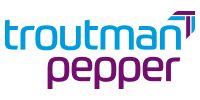Source: site

Nearly 96 percent of all U.S. households were banked in 2023, according to a national survey by the Federal Deposit Insurance Corporation (FDIC).
The 2023 FDIC National Survey of Unbanked and Underbanked Households found that 4.2 percent of U.S. households (representing 5.6 million households) lacked a bank or credit union account.
While the nation’s overall unbanked rate remains at its lowest level since the FDIC survey began in 2009, lower-income, less-educated, Black, Hispanic, disabled, and single-parent households continue to be significantly more likely to be unbanked.
In addition, the FDIC survey found two-thirds (66.2 percent) of unbanked households relied entirely on cash, while a third (33.8 percent) of unbanked households relied upon a combination of prepaid cards or nonbank online payment services such as PayPal, Venmo or Cash App to conduct transactions.
Since 2009, the FDIC and the U.S. Census Bureau have conducted a comprehensive biennial survey of U.S. households to measure the use of banking and financial products and services.
The unbanked rate was at its highest recorded level (8.2 percent) in 2011, falling by almost half to 4.2 percent in 2023, corresponding to an increase of approximately 5.3 million banked households.
Nearly half of banked households (48.3 percent) used mobile banking as their primary method to access their accounts.
Over the past decade, use of mobile banking as the primary means of account access increased almost ninefold, while use of bank tellers fell more than half and use of online banking declined more than one-third.
Between 2021 and 2023, use of nonbank online payment services such as PayPal, Venmo, or Cash App increased, while the use of general-purpose reloadable prepaid cards decreased.
Compared with banked households, unbanked households’ use of nonbank online payment services and prepaid cards as a substitute, rather than to supplement, a bank or credit union account grew.
For the first time, the FDIC asked households about their use of Buy Now, Pay Later (BNPL), short-term loans that allow consumers to split their payments on purchases over time. In 2023, 3.9 percent of all households used BNPL in the past 12 months.
Finally, the survey included questions about household use of crypto or digital assets to store and transfer money.
In 2023, 4.8 percent of U.S. households owned or used crypto or digital assets in the previous 12 months. A significant majority of these households held crypto or digital assets as an investment (92.6 percent) while only 4.4 percent of these households used digital assets as a form of payment.




